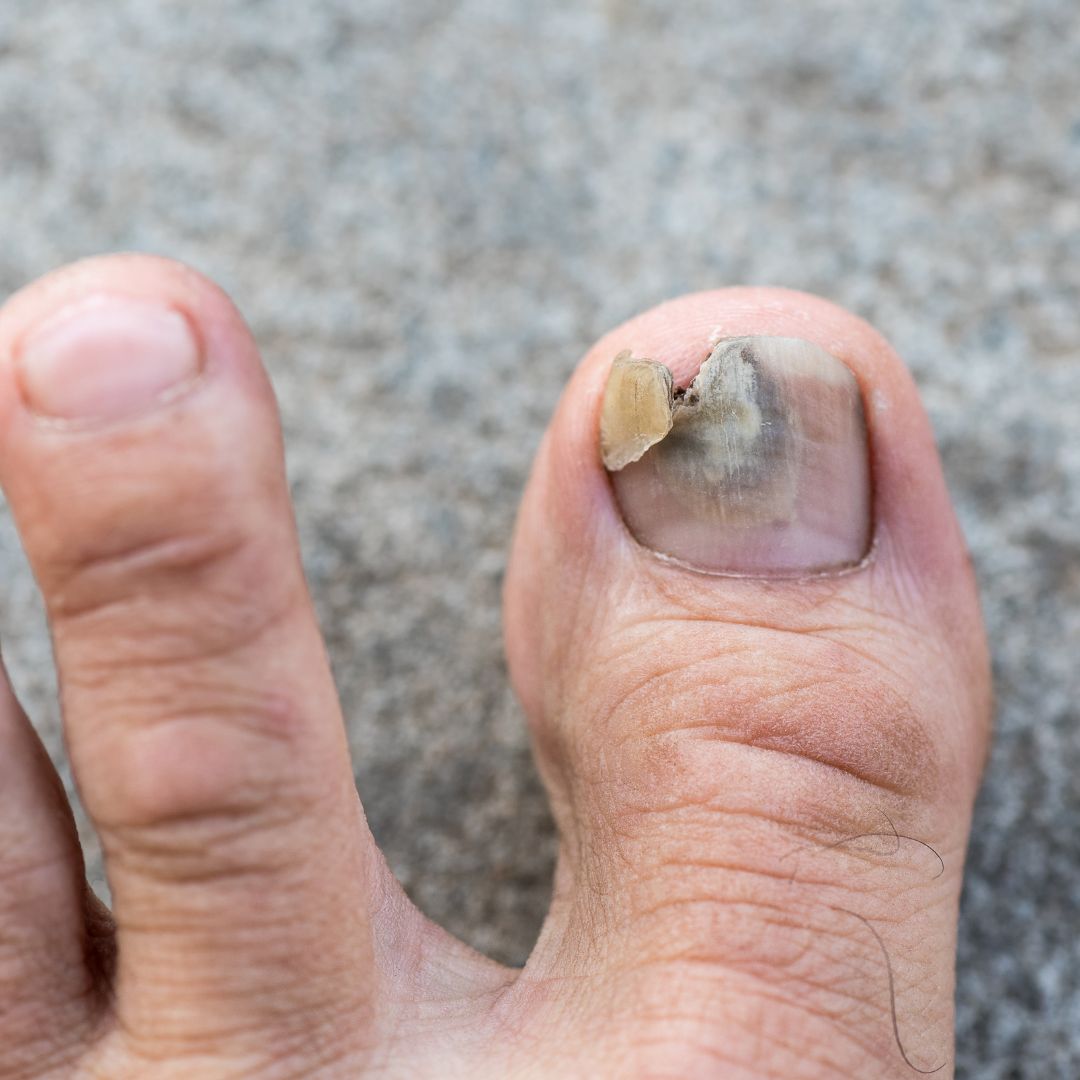At last, it’s summertime - the season of sandals and the chance to show off that freshly done pedicure. That might be the thought for some, but if you suffer from nail fungus, the last thing you want to do is showcase your toes to the world. The good news is that toenail fungus can be treated, but first, how did you get it in the first place?
WHAT IS TOENAIL FUNGUS?
Toenail fungus, also known as onychomycosis, can be challenging to treat, especially if it’s been left untouched and has spread. The problem is that the infection can go along time without anyone noticing because they tend to be painless until it gets to the point of wreaking havoc on your nail. It is highly contagious and notoriously difficult to treat as it burrows into the nail and nail bed. It’s also important to know that there are three main types of toenail fungus all in which infect the toenail differently based on the nature of the fungus.
The three are as follows:
Subungual Onychomycosis: the same type of fungus that causes athlete’s foot infection stars under the skin underneath the nail.
Candida Onychomycosis: a toenail fungus that is caused by yeast, although it is less common to be found in the nails.
White Superficial Onychomycosis: this type of infection occurs only on the top layer of the nail and appears as white spots. It’s the easiest to get and the easiest to treat. But, if left untreated, can cause the nail to become rough and crumbly.
So, how can you avoid these? Well, fungus tends to linger in damp areas such as community pools, gyms, and locker rooms. It’s a good idea to keep your nails trimmed short, always wear shoes if possible, and to frequently change sweaty socks and shoes, especially in the summertime.
WHAT DOES THE COLOR OF MY TOENAIL INDICATE?
No, we’re not talking about your hot pink toenails, but the color of your unpolished nail. Of course, what you’d like to see is the translucent nature of the nail, but what if it’s black, yellow, white or green?
Yellow Toenail
If you have noticed that your toenail has turned to a yellow tint, you may want to look into purchasing an antifungal treatment, because fungus is likely the culprit.
Green Toenail
We hate to say it, but if your toenail is green in nature, it’s likely the nail is infected with bacteria. Green-nail syndrome, known as Chlronychia, is when the infection has inhabited underneath the nail. This bacterium is usually picked up in damp and wet conditions, so knowing the cause of the infection can help with the course of treatment.
White Toenail
Have you noticed a bunch of white spots on your toenails? The culprit is likely White Superficial Onychomycosis. As we stated above, this form of toenail fungus shows up in white spots or powdered like patches. If you see this on your nails, treat it sooner than later before it causes your nail to become crumbly.
Black / Dark Discoloration
If your toenail appears black or dark, it can be from the cause of physical trauma to the toe. Whether it’s a bruise or dried blood, it should clear up on it’s own. However, in some cases, a brown streak on a toenail can indicate something more serious such as an inflammatory condition or melanoma. It never hurts to get it checked out by your doctor.
HOW TO TREAT TOENAIL FUNGUS
If you’re looking for a natural, effective way to not only treat your toenail fungus, but to restore brittle and discolored nails, try our natural nail fungus treatment. It delivers a curative effect to nail fungus infections via topical application. The lipophilic properties of the oils we use readily absorb into cell membranes of nails due to their low molecular weight. This is critical as the infection resides in and under the cells of the nail.
How to Spot and Naturally Treat Toenail Fungus

By Dr. Peter Klapper Ph.D.



